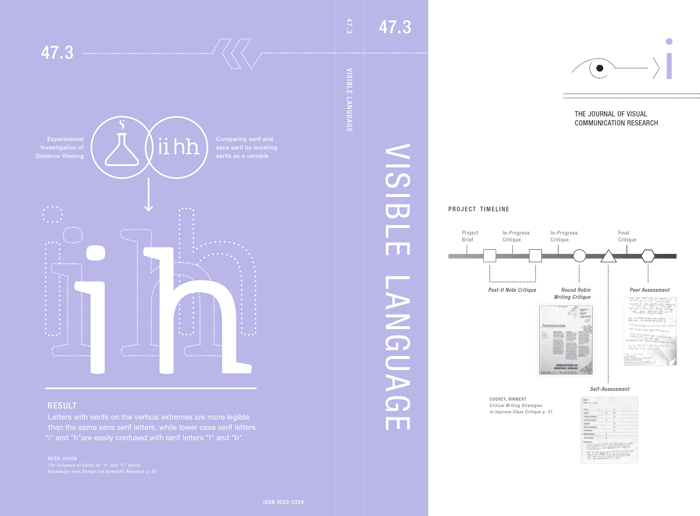Investigating Readers' Impressions of Typographic Differentiation Using Repertory Grids
Abstract
Document designers combine a range of stylistic and structural typographic attributes to articulate and differentiate information for readers. This paper explores how the kind of typographic differentiation used in a document influences readers' impressions of documents. A preliminary study indicated that three patterns of typographic differentiation (high, moderate and low) might underlie participants' impressions of magazine design. Subsequently, a set of nine magazine layouts with controlled content was purposefully developed to systematically examine the impact of high, moderate and low patterns of typographic differentiation on participants' impressions of documents. These documents were used in a repertory grid procedure to investigate the kinds of impressions readers articulate in relation to typographic presentation and whether readers are likely to formulate similar or differing impressions from high, moderate, and low patterns of typographic differentiation. The results suggest that typographic differentiation influences a range of rhetorical and experiential judgments. For example, participants described high differentiation documents as the most attention-grabbing and easy to skim-read, while they considered moderate and low differentiation documents to require deeper reading strategies. In addition, participants assumed high differentiation documents to be much more sensationalist than moderate or low differentiation documents, which they generally perceived as authoritative and credible.Downloads
Published
2013-11-01
Issue
Section
Journal Article

